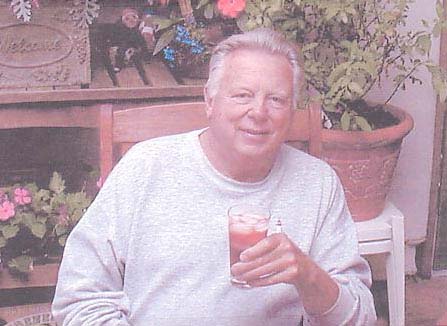
Totoaba San Felipe Money Run
![]()
|
Chuck McReynolds today. He fished totoaba commercially at San Felipe in 1945. |
AMERICANS "MEAT FISHING" COMMERCIALLY FOR TOTOABA AT SAN FELIPE, MEXICO
By Gene Kira, May 31, 2004, as orginally published in Western Outdoor News:
In this last of three columns, Chuck McReynolds of Pasadena describes his commercial totoaba fishing trip, from San Bernardino, Calif., to San Felipe, Baja California, in 1945. Notable in McReynold’s account, he says that among the Americans fishing for totoaba in those days, nobody at San Felipe was interested in saving the air bladders, or “buche” in Spanish--which he refers to as the “gizzards”--for the Chinese market. Said Reynolds, “Nobody was interested in their gizzards. All they wanted was that tasty meat. By 1960, all of ’em were gone.”
Beginning in the 1920s around Guaymas, the sale of totoaba air bladders for the Chinese soup market was one of the first reasons for their early decline. The nearly extinct fish was finally protected in the 1970s.
Here then, is the final installment of Chuck McReynolds’ personal account of his experience with this historically important commercial fishery at the north end of the Sea of Cortez:
|
|
COMMERCIAL TOTOABA TRIP TO SAN FELIPE
“In maybe October or November of 1945, I made my second trip to San Felipe, with my dad and a neighbor to go totoaba fishing.
“The fish was sold to a guy whose name was Milton Pate. He was in the wholesale meat business. Another guy's name was Sage, and either a brother or a cousin, owned Sage's, one of the first ‘supermarkets’ in San Bernardino after the war.
“Sage and Pate had a yard into which products were trucked, and from there distributed to customers. There was a refrigerated building for storing his meats and fishes until they were delivered. The building was on Mount Vernon Street, near the rail yards.
“The fish were weighed, whole but gutted, and the price was per pound. I'm really not sure what the price was, but it was agreed to before we left to go. Is 60 cents-a-pound possible? That's the number that sticks in my head. That was also the price of a pound of butter, but a dozen eggs could be had for 50 cents.
“Milt Pate owned the nets and buoys, and also the outboard motor, and the boat and the boat trailer. Sage owned the trailer for the ice, and the ice which went into the trailer. The boat, the ice trailer, and the nets were stored at the Pate-Sage yard.
|
|
“The San Felipe trip I was on was a one-day affair. We timed leaving San Bernardino to arrive at San Felipe before dawn, driving all night.
“A neighbor pulled a maybe 22-foot boat, and another guy pulled a trailer filled with crushed ice.
“I'm not sure where we parked the tow trucks and trailers while we fished. It wasn't far from where we backed the boat into the water. I presume it was near the present day launching area at the north end of the malecon, but I'm not sure. There wasn't much there, no buildings or seawall or paved streets.
“My dad and Pate, and another guy, Bob Thompson, launched the boat at first light, left me snoozing in the truck, and went to set the nets. They came back with the first load at midmorning, left Thompson to do the gutting, and went out with me in the boat to set the nets again.
“We went to a certain place, not far from shore, and there were other boats doing the same thing. The nets were gill nets with relatively large mesh. After an hour or so, we hauled in, took the fish ashore, and then went fishing again.
“We had all the fish we could handle for the ice we had brought, and quit by mid-afternoon, headed for home. I think there were several totoaba over a hundred pounds, not unusual then.
“We gutted the fish, and put them on the floor of the trailer. We first removed the crushed ice from the trailer, and put it on a tarp. Then shoveled a layer of ice over the fish. Then more fish, more ice, more fish, etc. Finally, we put the tarp over the whole thing and headed for home.
“On a nice day, you might see 300 small boats in ‘San Flippy’ bay, netting tots. The fish were eaten at restaurants up and down the coast.”
PREVIOUS ARTICLES: [1] [2]
(Related San Felipe articles and reports may be found at Mexfish.com's main San Felipe information page. See weekly fishing news, photos, and reports from the major sportfishing vacation areas of Mexico including the San Felipe area in "Mexico Fishing News.")
MEXICO FISHING INFO SAN FELIPE FISHING INFO "WEEKLY MEXICO FISHING NEWS" FISH PHOTO GALLERY
